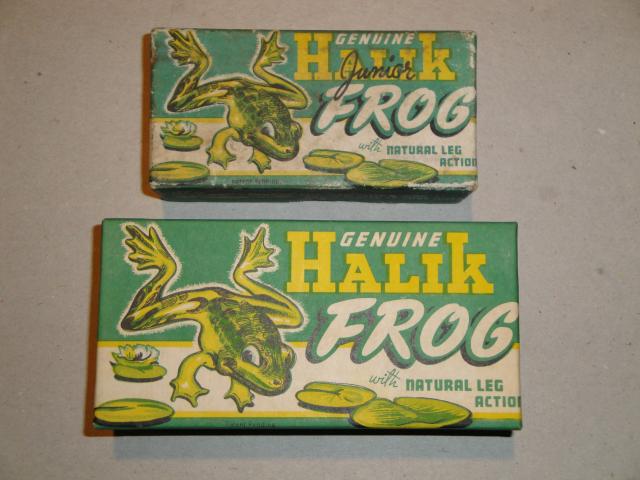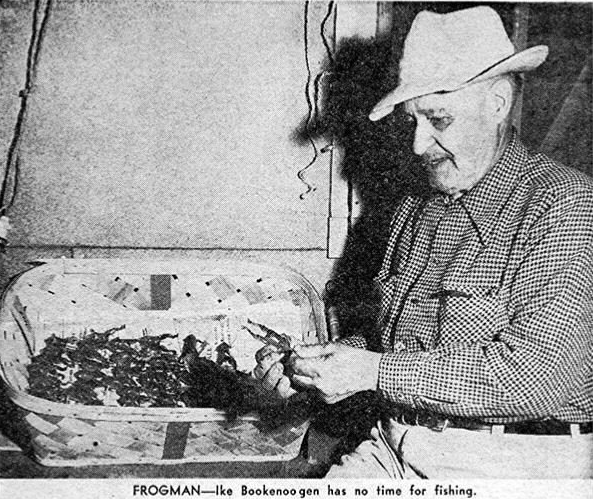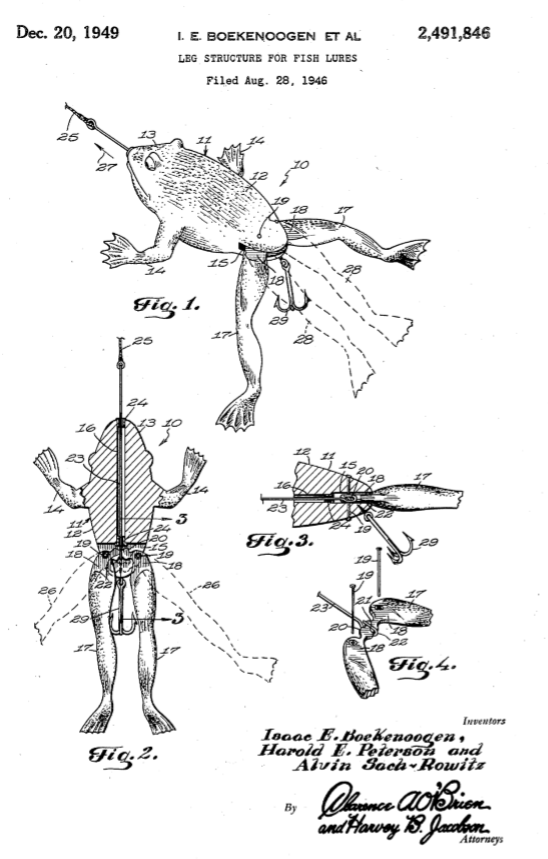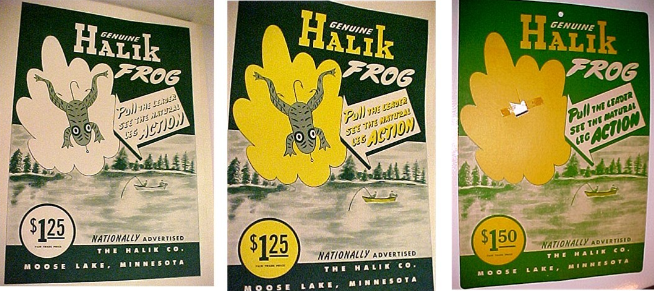March 2019
Halik Frog
Manufactured by the Halik Co.
Moose Lake, MN
1946
In my Lure Of The Month for November of 2009, I wrote about the Halik Frog made in Moose Lake, MN.
In turns out, much of the data that I received was not correct. I was going to revise my article, but decided to just write a whole new article and give it an unprecedented 2nd LOTM. Thanks to a family member and visitor to my website for setting the story straight.
While serving our county in the war in Germany, Dr. Alvin Sach-Rowitz observed German tradesmen manufacturing children’s toys.
On his return to Moose Lake, Minnesota, he spoke with Harold Petersen (the local Rexall druggist) and Ike Boekenoogen about his toy manufacturing ideas. They decided to go into business and began to make plans on starting a manufacturing business in January of 1946. One month later when Carl Myers (a local game warden) heard of their plans, he suggested the idea for a frog fishing bait with moving legs. Such a bait would fill a great void in the fishing community, he speculated.
The three men agreed, and formed the Halik Company by used Harold, ALvin and IKe in the name. It took a year and a half to perfect the bait and obtain or build the equipment needed to manufacture it. Finding the wire, hooks, and plastic bodies (molds) was not an easy task.
The frogs were to be assembled in Ike Boekenoogen’s garage. While this may not sound impressive, Ike had designed an elaborate assembly line and used his mechanical knowledge to design and build the machinery needed to perform seven separate operations on seven different machines to create one frog.
The plastic bodies were made by Minnesota Plastics (and later by Flambeau Plastics Corp) in St. Paul, MN and the rubber legs by a firm in Ravenna, OH. They were shipped to Moose Lake partially painted and ready to assemble. The final manufacturing process was all ramped up to go in Moose Lake in October of 1947.
The manufacturing process went like this (each step performed on a different machine): 1) Eyelet holes are stamped into the rubber legs; 2) hooks are inserted into the legs; 3) hooks are riveted into place 4) the center wire is clamped onto the rubber legs; 5) the frog body is strung onto this wire; 6) an eyelet is made on the wire 7) a large hook is inserted between the frogs legs. After these seven steps, the frog is painted with a special die made by Ike.
Used locally, the lure was a proven fish catcher. The promotion of the new bait was done on a nation-wide scale and the Halik Company had many dealers very interested to sell this new fishing frog. Many dealers told Dr. Sach-Rowitz that they saw no reason why this bait won’t go over BIG and anticipation was high for many orders to flow in by Spring of 1948. The total investment in the frog lure making business was now well over $30,000. The hope was to get another small industry started in the region and who knows, expand someday.
Sadly, while many frogs where manufactured and sold, the demand was not as great as they hoped. In 5 years, the operation was closed. Flambeau Plastics Corporation and Mr. Sauey were making the frog body molds towards the end…which was the center of my last LOTM article from 2009…but they did not invent the frog bait. When Halik stopped making lures, Flambeau Plastics had lots of frog bodies still on hand ready to be shipped. In early 1955, Ike Boekenoogen reluctantly told them to dispose of them when there was no luck on selling the frog making business to someone else.
It is said that other frog designs may have been in the works by Halik, but it never came to be. Also, I find it strange that several other companies came out with very similar frog baits around the exact same time as the Halik, such as the Froglegs fishing lure offered by the Jensen Distributing Company.
This spring I plan on trying out a Halik frog. Why? Number one: To see it in action and catch a fish. Number 2: In honor of the inventors who had an idea for a frog with mechanical legs over 70 years ago….




